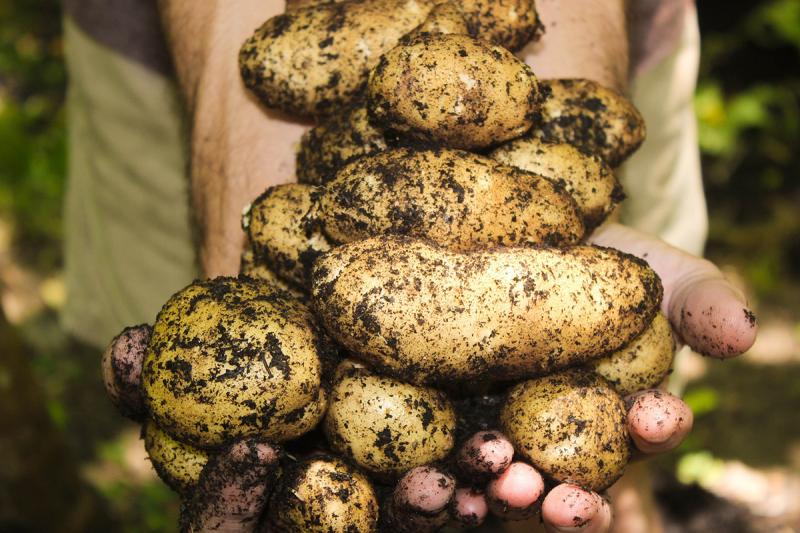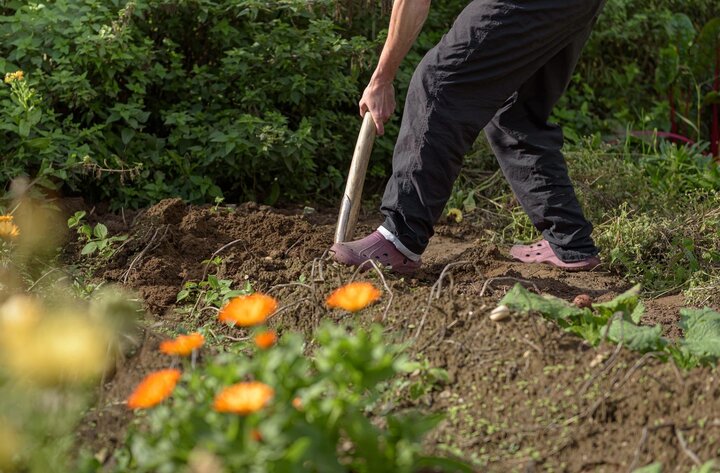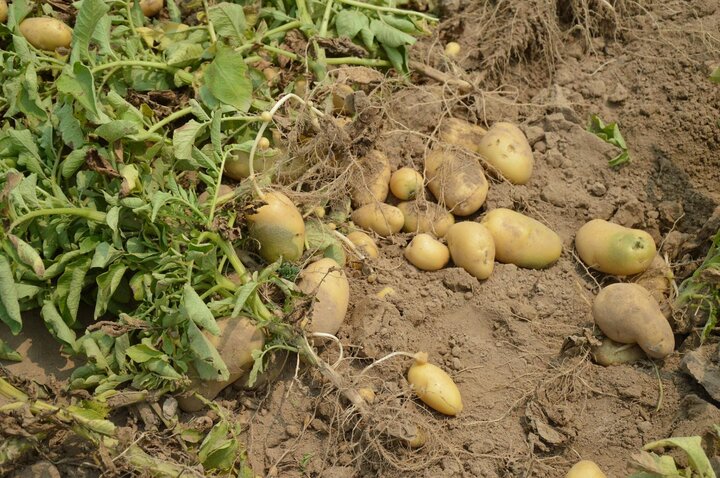Sarah Browning, Nebraska Extension Educator

Newly harvested potatoes. Picture by Pixabay.com.
Potatoes are one of our favorite vegetables. The Northern Plains Potato Growers Association says each person in the United States eats 110 pounds of potatoes each year!
Fortunately potatoes are not very difficult to grow in the home garden. And once you have your crop in the ground, it’s important to know when and how to harvest. Harvesting correctly ensures the best production from your planting, as well as good winter storage.
Both white and red-skinned potatoes can be grown as an early crop for new potatoes and as a late crop for storage.

New Potatoes
“New” potatoes are young tubers harvested before their skin has thickened and become tough. Typically tubers will reach a good size for harvest as new potatoes about 7-8 weeks after planting. Dig a few potatoes at this point to determine if they have reached a good size for eating. If you’re happy with the size, then proceed with harvest.
Potatoes form above the seed potato originally planted. To harvest without damaging the tubers, dig down about 12 inches with a spading fork and turn the whole plant upside down. Once the roots are exposed, the small new potatoes can be removed. Plants can be harvested as needed or harvested all at one time and the new potatoes placed in storage.
Storage Potatoes
For storage potatoes, begin harvest after the vines have died back naturally on their own and have been dead for about two weeks. To check maturity, dig up one or two test hills of potatoes. The skins on mature potatoes should remain firmly attached to the tubers when rubbed with a finger. If the skins on the tubers are thin and rub off easily, the crop is not fully mature and will not store well. Wait a few more days before harvesting.
Potatoes can tolerate a light frost, 30-32°F, while still in the ground, but heavier frost will affect potato quality and shorten their storage life. Freezing temperatures cause the potato flesh to turn gray or black.
Choose a warm, dry day to harvest. With a spading fork, dig up the hills being careful to dig far enough away from the main plant to avoid bruising, skinning, or cutting the tubers. Gently brush off a majority of soil, but do not wash them. Washing decreases storage life and increases the potential for rots.
Sort out any potatoes damaged during harvest and use them for fresh eating as soon as possible. Damaged potatoes are likely to rot in storage.

Curing and Storage
Before placing potatoes in storage, the tubers should be cured. Cure potatoes at a temperature of 45-60°F and high relative humidity (85-95%) for two weeks. Healing of minor cuts and bruises and thickening of the skin occurs during the curing process. Use perforated plastic bags to provide the high humidity needed during curing.
Once cured, sort through the potatoes and discard any soft, shriveled, or blemished tubers. These potatoes may spoil in storage and destroy much of the crop. Potatoes should be stored at a temperature of 40-45°F and relative humidity of 90%. Perforated plastic produce bags can be used in storage to help maintain high humidity. If stored in a dry environment, the tubers will be come soft and withered in appearance.
Store in a dark location as potatoes turn green when exposed to light. If storage temperatures are above 45°F, the potatoes will start to sprout after two or three months. When stored below 40°F, potatoes develop a sugary, sweet taste. Sugary potatoes may be restored to their natural flavor by placing them at room temperature for a few days. Do not allow potatoes to freeze.
Most modern homes have few good storage places for vegetables. A cool garage or basement may be the best site. Another possibility would be a second refrigerator set at the temperatures mentioned above.
Remove any green sections or sprouts before eating and enjoy your home-grown potatoes!
Images from Pixabay.
Search Our Archive
Associated Video
Fusarium Potato Rot
Nebraska Extension Educator Amy Timmerman talks about how to harvest and store potatoes to avoid fusarium rot.